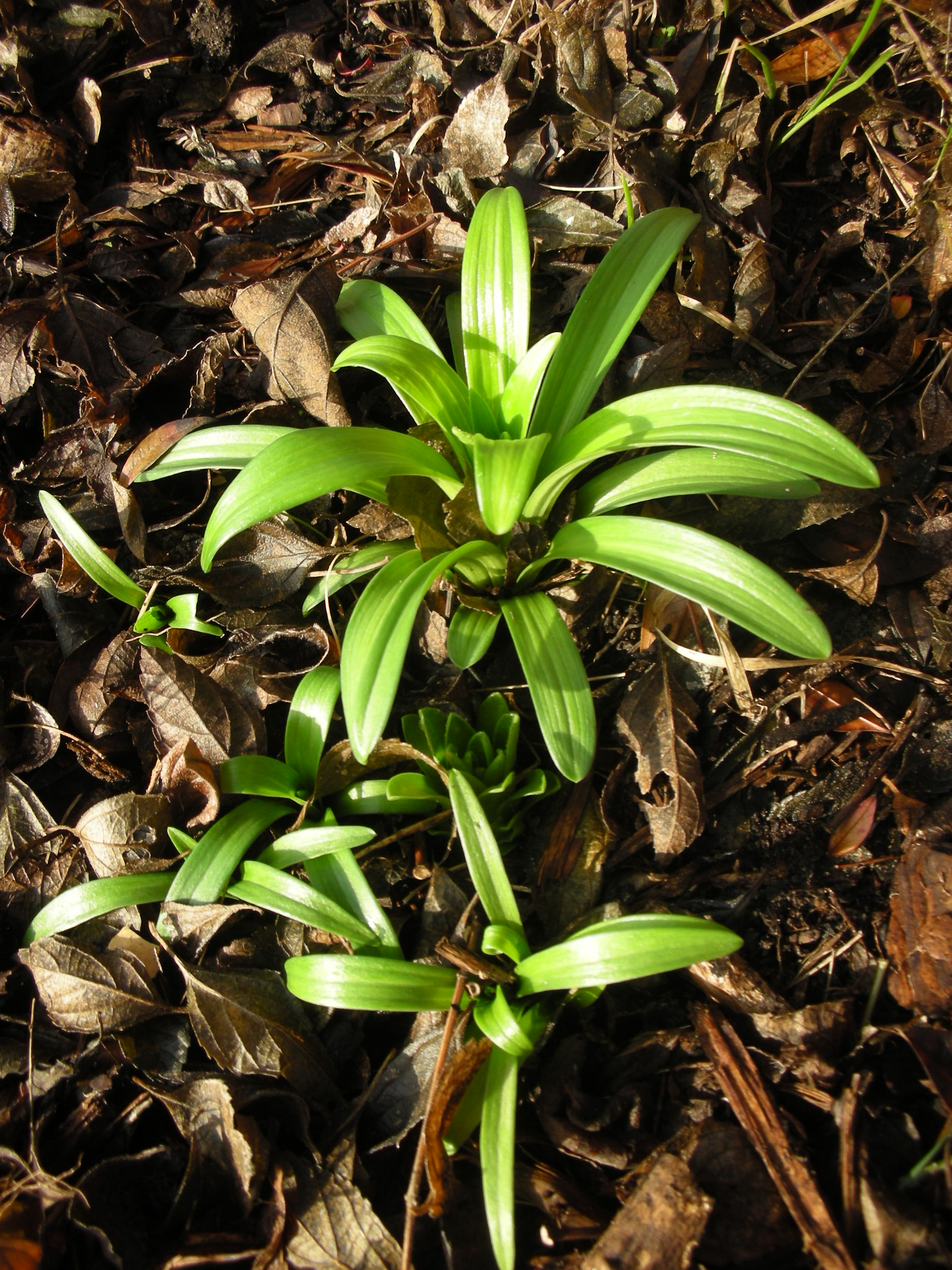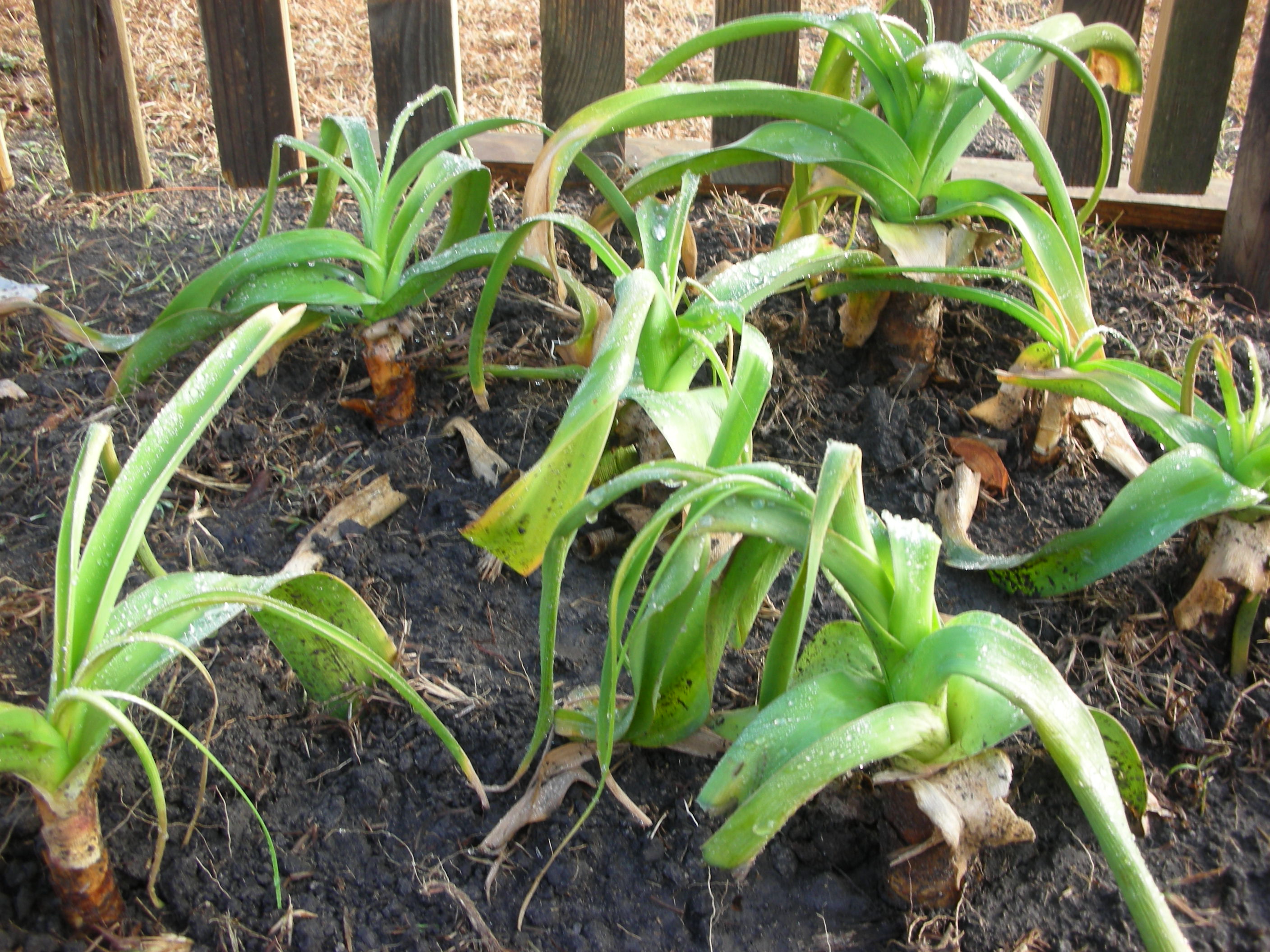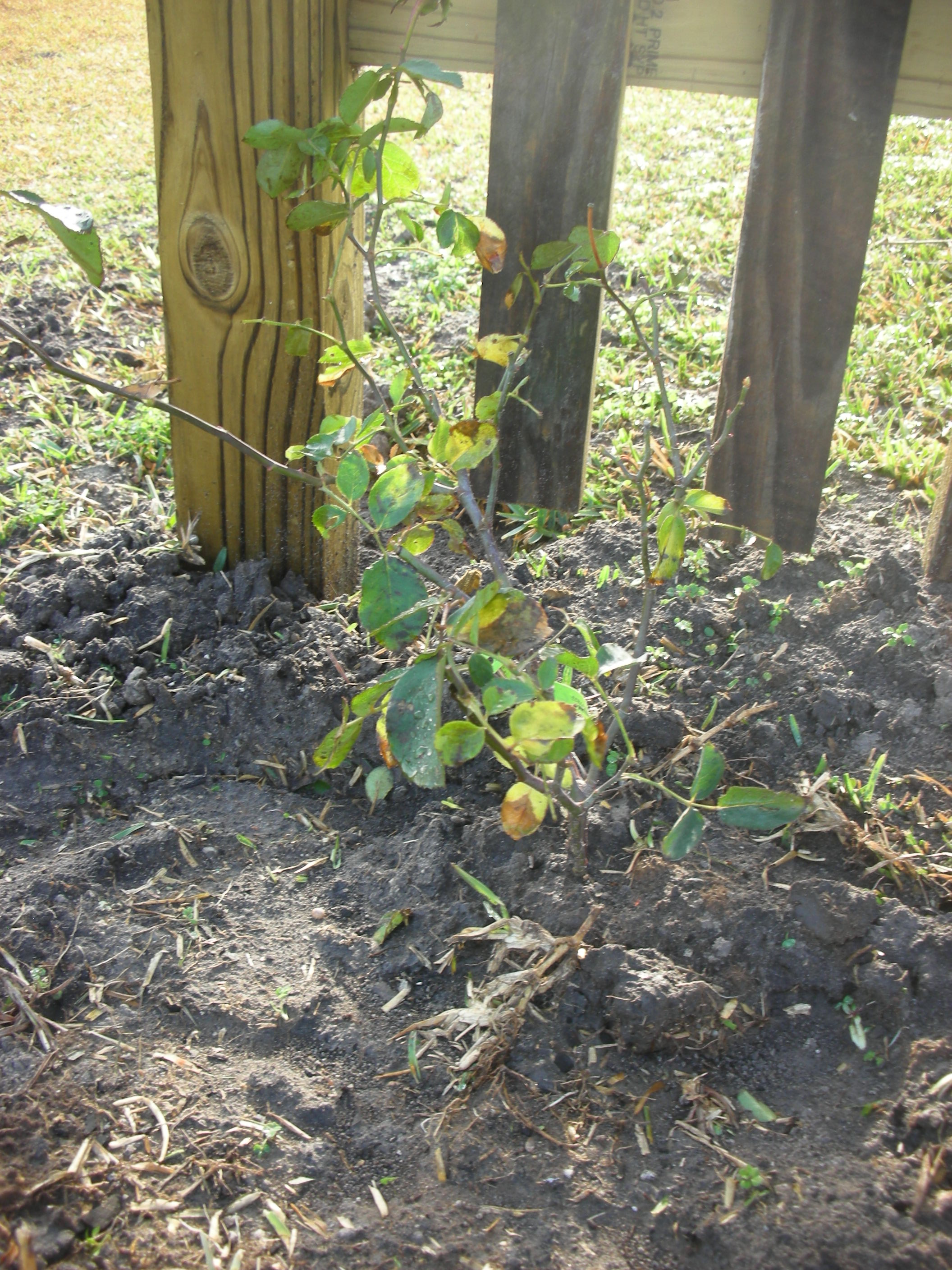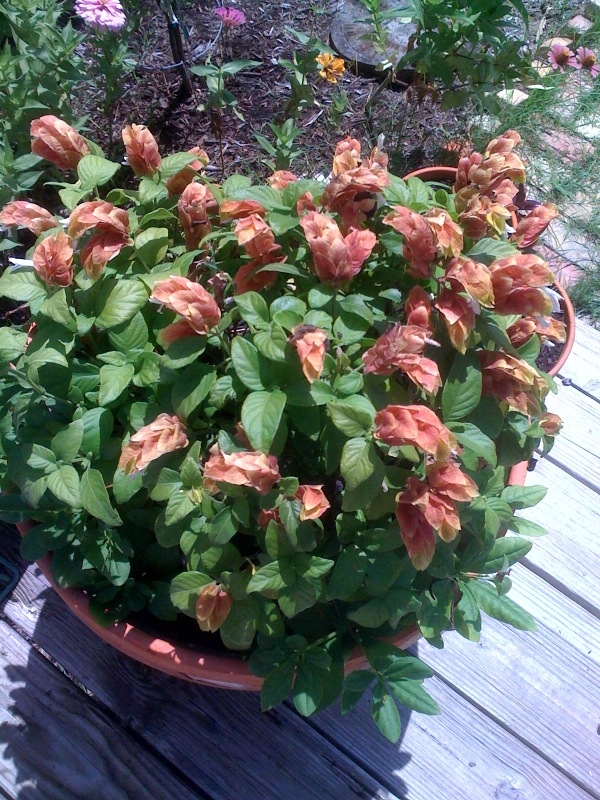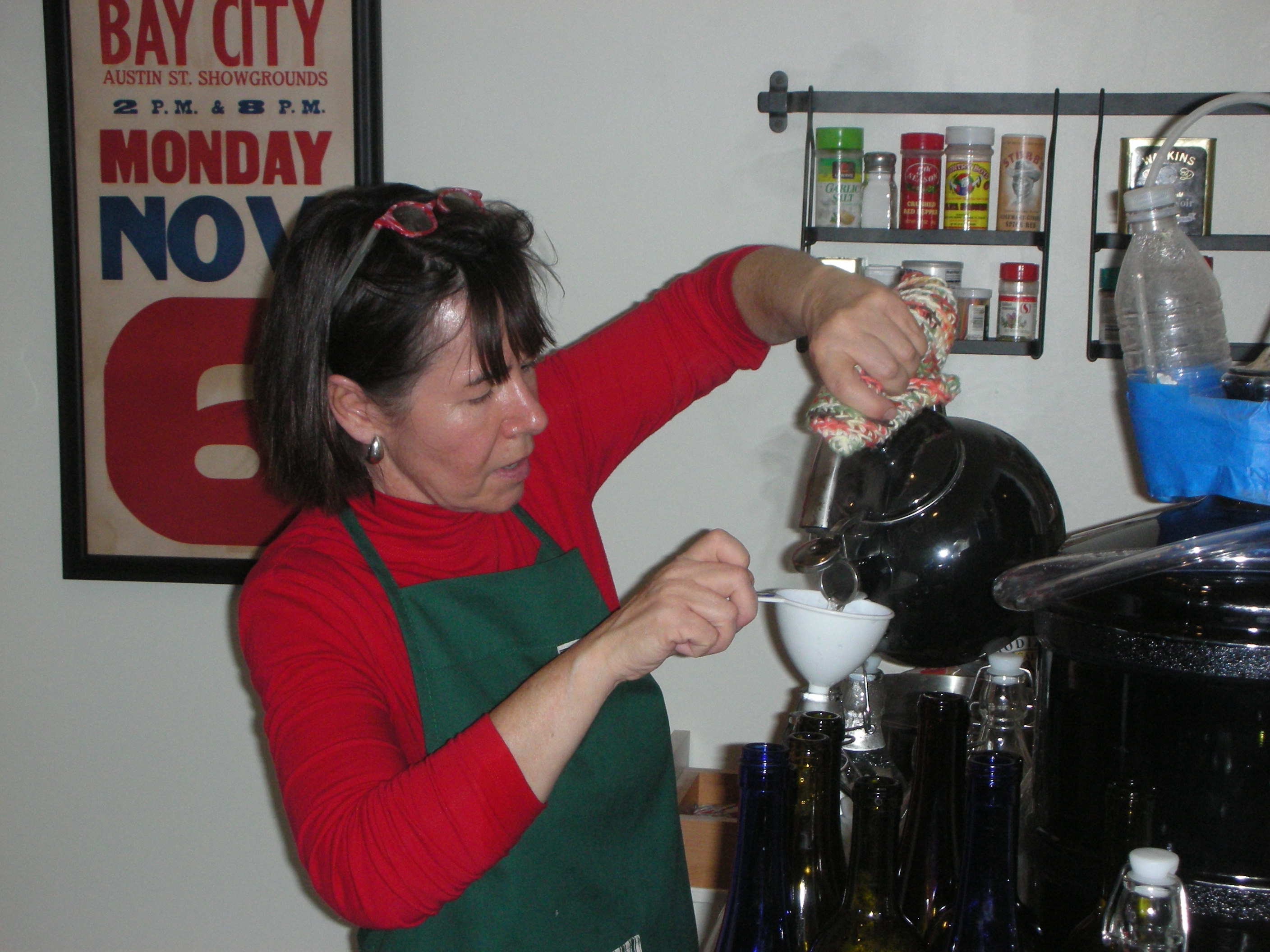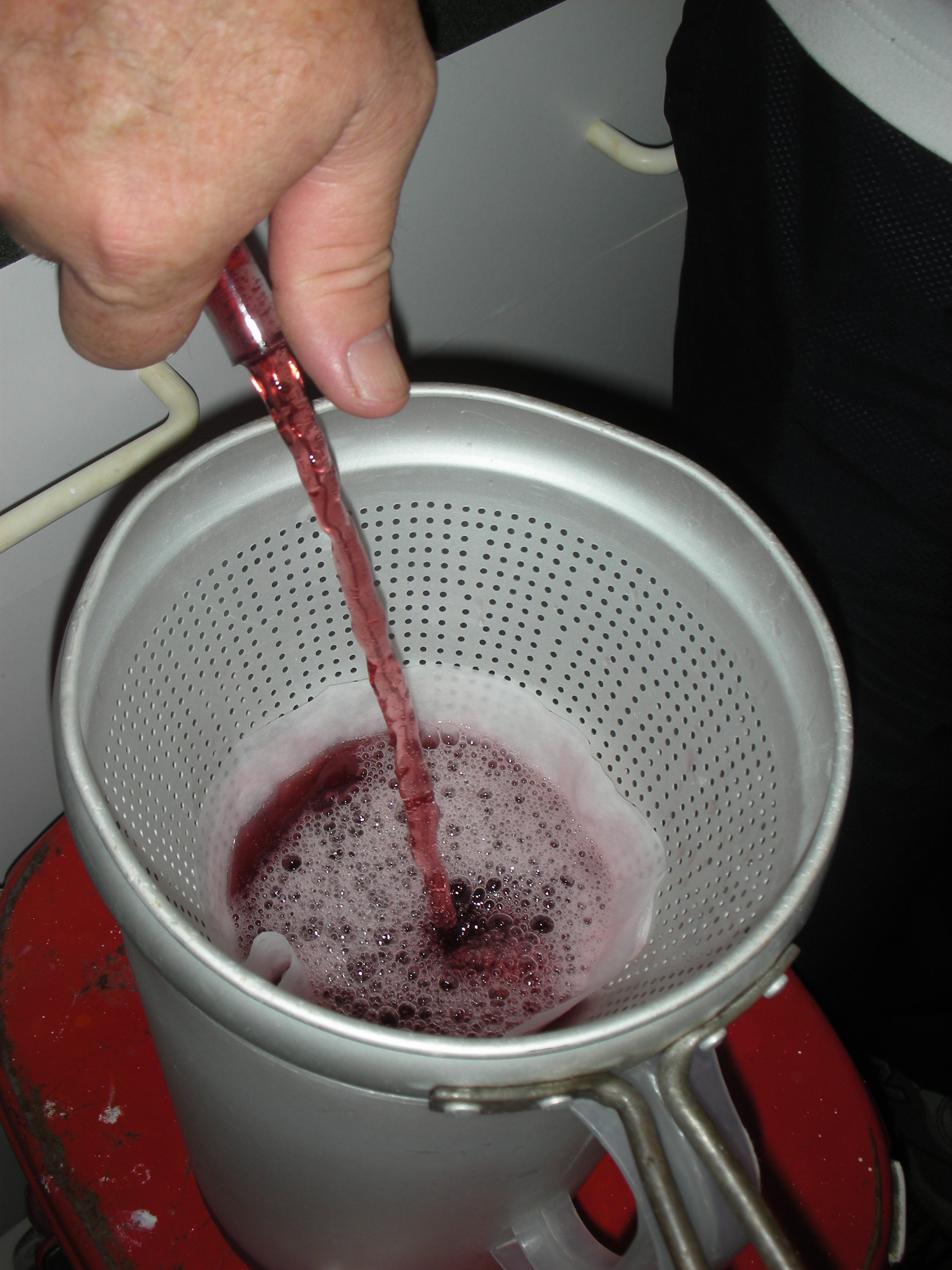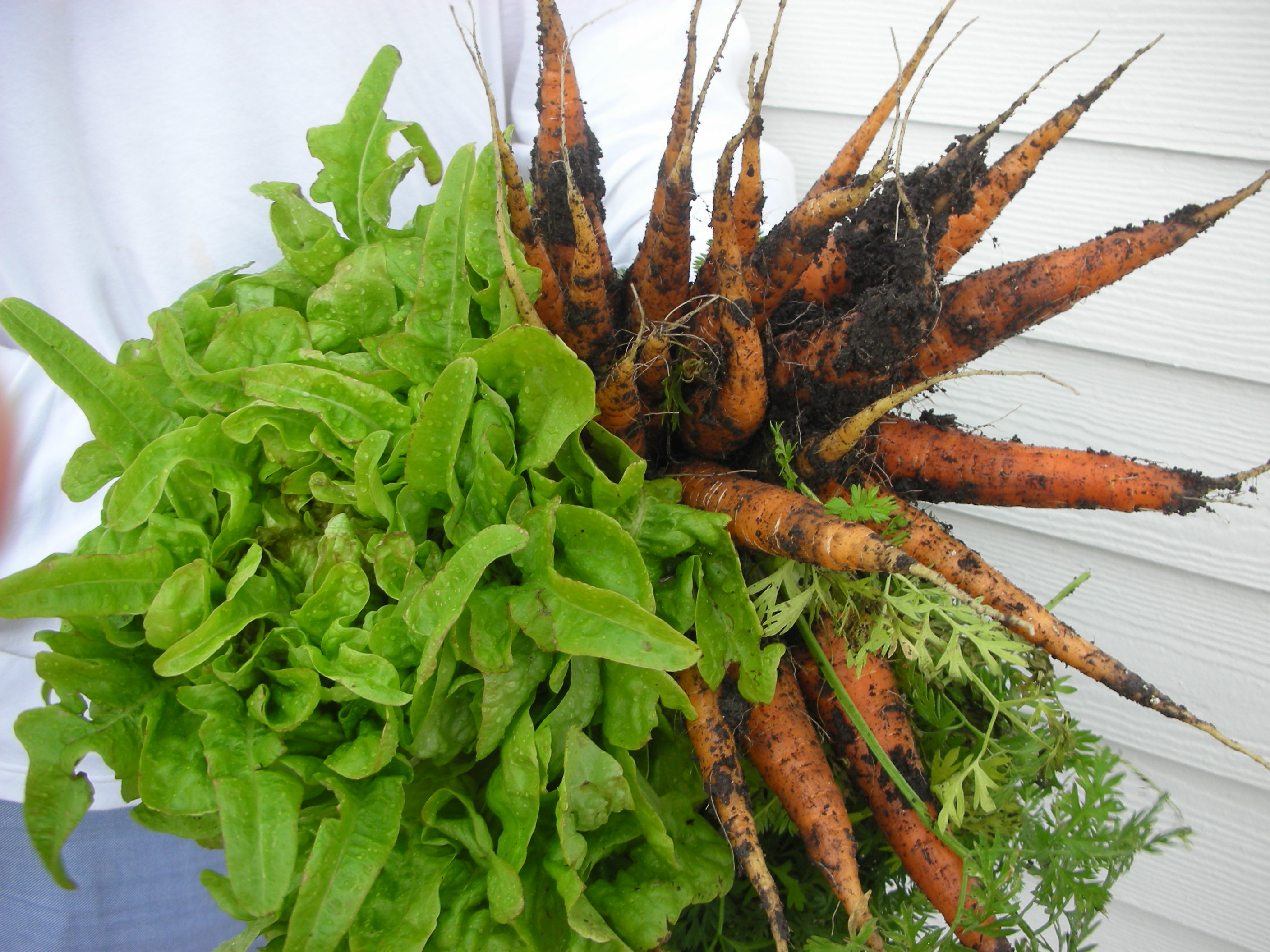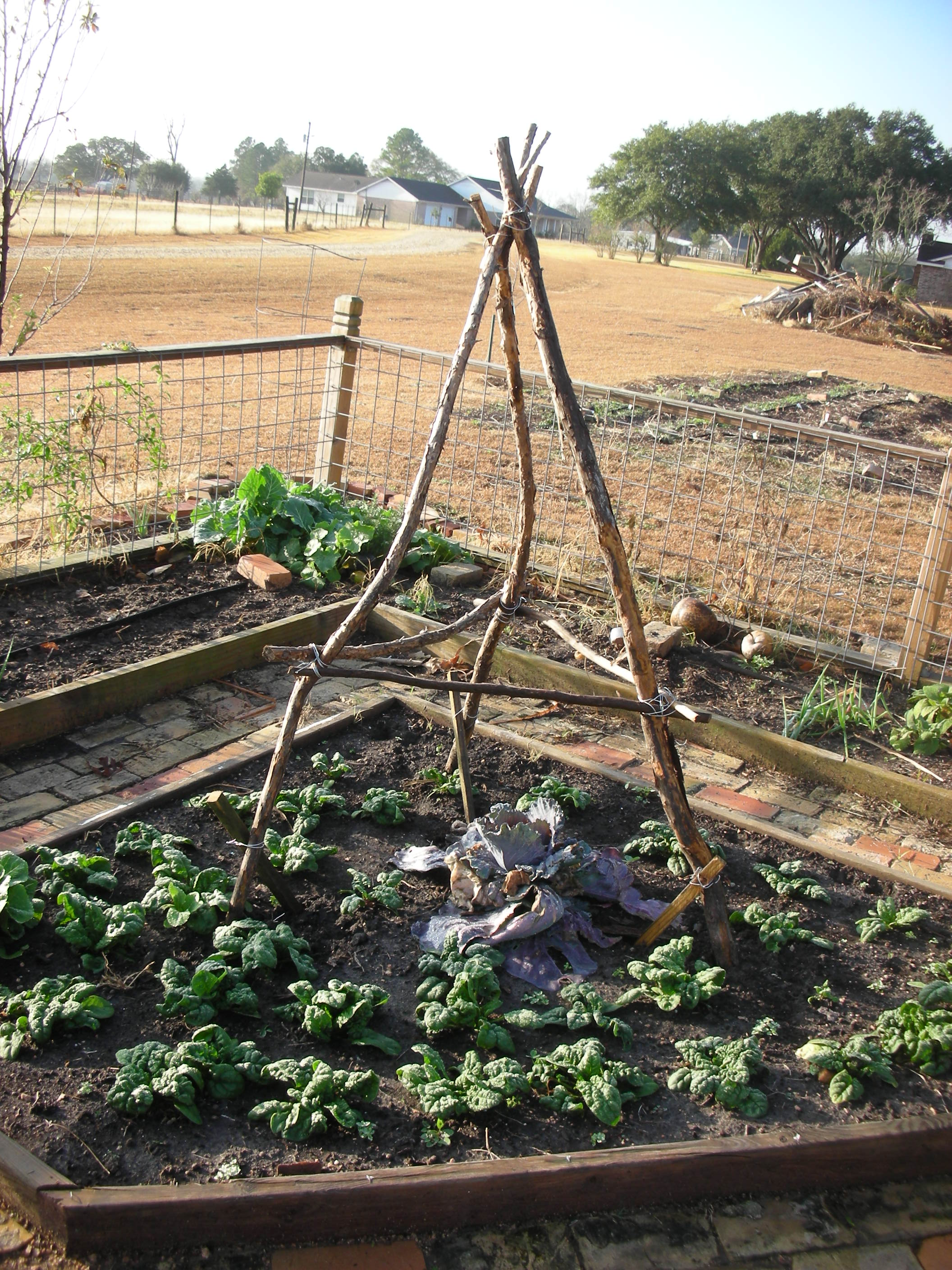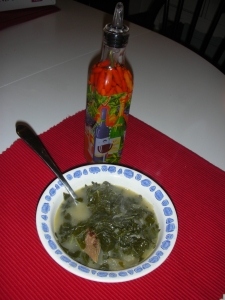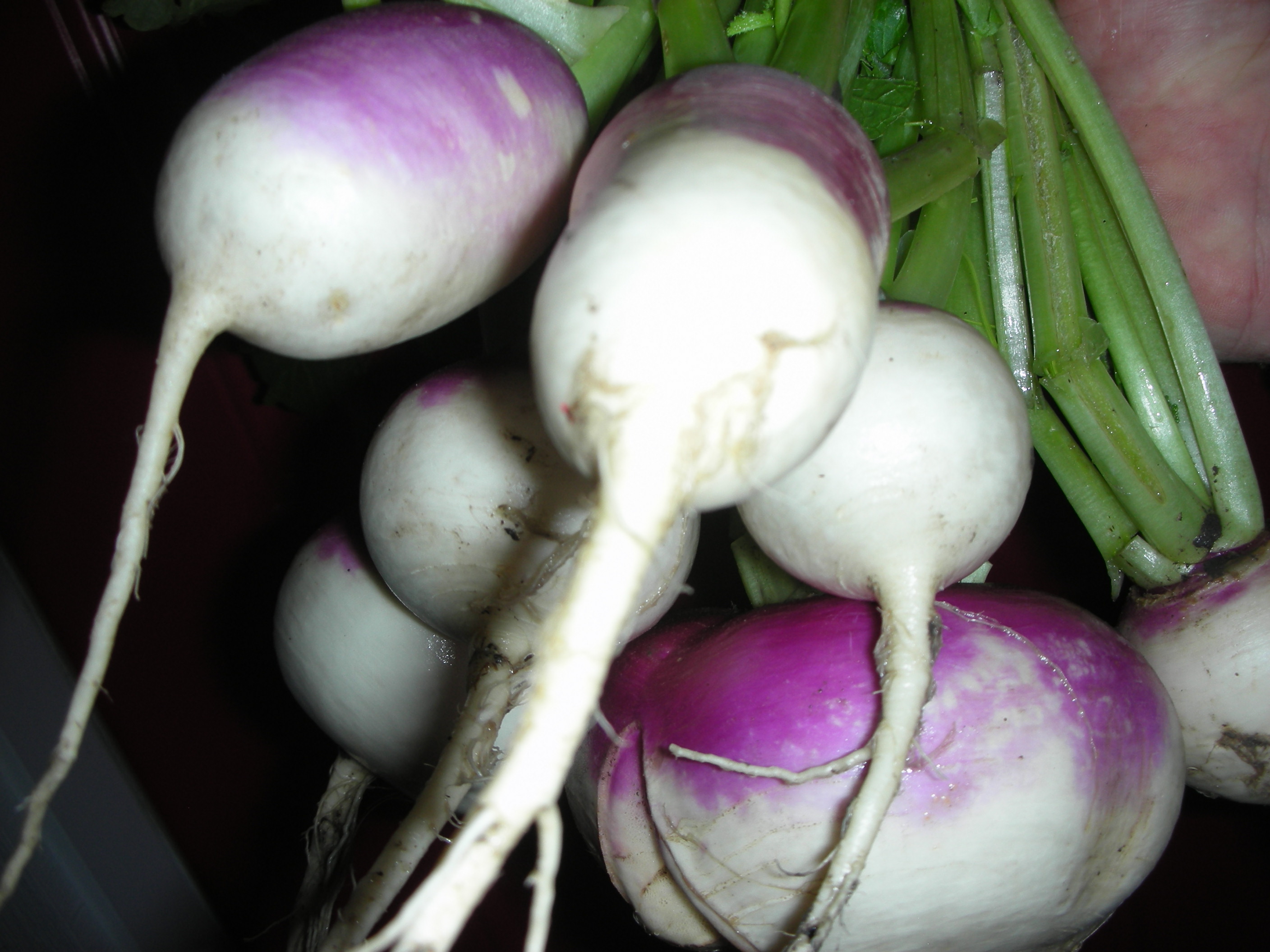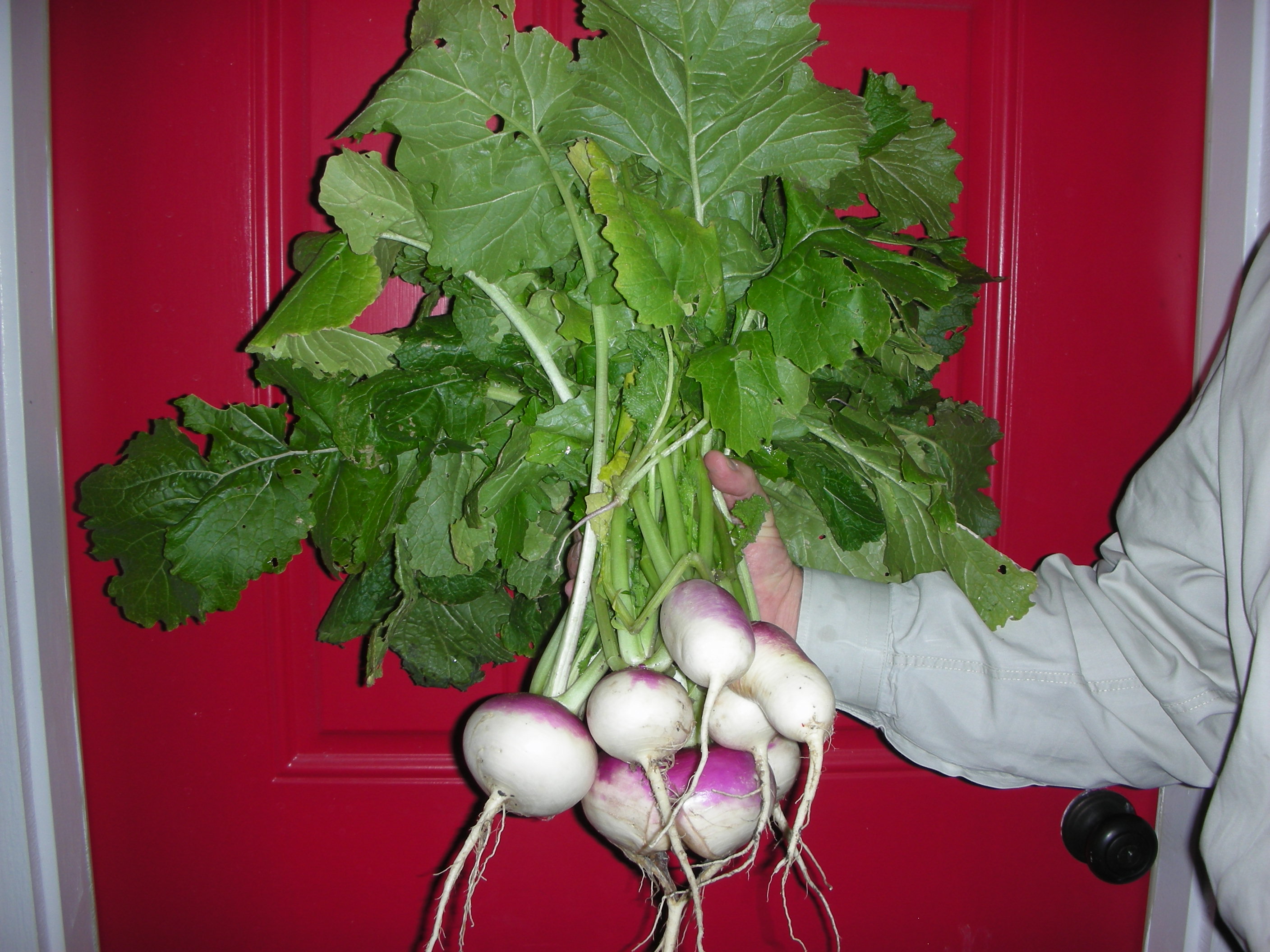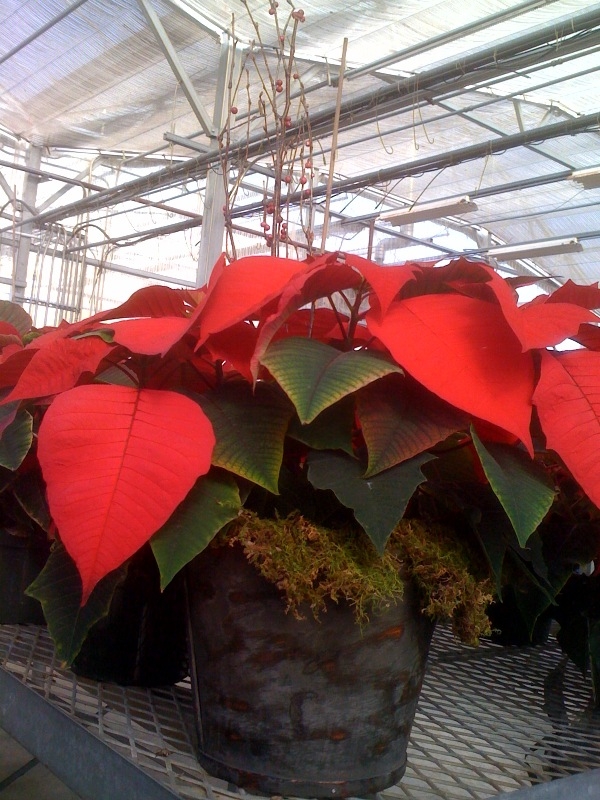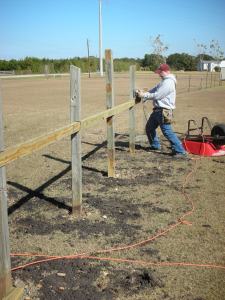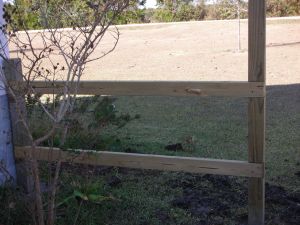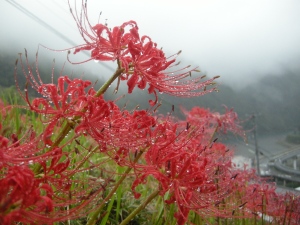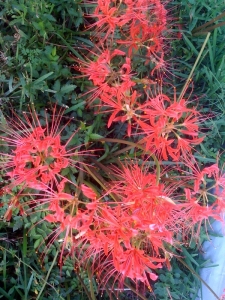We have been so busy with the holidays and the remodel that our beds have suffered. All of them need weeding and trimming. This past Monday was so lovely that my wife and I decided to do some of that much need yard work. We started the morning by cutting back the Lantana that grows by our back deck. While we were pruning I got one of those little surprises that I just love in the garden. Tucked under the leaves and the bare branches of last year’s lantana was this year’s Easter Lilies! Truth be told, I had forgotten they were there. I won a single stem at our church picnic last summer and I just stuck it in the ground. Well, that was a good decision. That one plant has now divided and given me five new plants for the price of one. I have never grown Easter Lilies before so I am not sure if this much division is common, but I am excited about it.
After we cleaned up our mess I decided to do my absolute favorite garden chore – move things! Fall is the best time for this, but, with a little care, you can move plants anytime of the year. My friend and garden mentor Cynthia Mueller says that if you move a plant correctly, it won’t even know its been moved. I have fully embraced her advice. The first thing that I moved was a bunch of milk and wine crinums (Crinum x herbertii). I got my crinums from a friend. I think that is how most people get them. I had several small clumps scattered around the yard so I decided to dig them up and make two masses on either side of my propane tank. I am hoping that their lush spring and summer foliage will help camouflage my ugly propane tank. Next, I moved a few clumps of daffodils and narcissus that were left by the previous homeowner. He had planted them willy nilly all over the place. I am slowly trying to sort them out and plant them in masses.
Once I ran out of things to move, I did a little planting. Since I have recently finished the arbor in the picket fence, I planted a Don Juan climbing red rose at the base of it. Don Juan is a fairly aggressive climbing rose that can grow to 15’. It has very beautiful deep red velvety double petals and it smells terrific. I have high hopes that it will be stunning on my white arbor.
Next, I got to plant some Primrose Jasmine (Jasminum mesnyi) that I have been nursing for the past nine month. I planted these on the east side of my house. My house is on a slope and it sits up on blocks, so I have a lot of space between the ground and the bottom of the windows. Since primrose jasmine makes mounds up to 10’ feet high, I figure this is the perfect plant. Primrose jasmine is an old-fashioned plant that is often called “Fountains of Gold”. You can see them growing at old home sites all over Texas. These plants make a huge mound of arching branches that are covered in double yellow flowers in the spring. I got mine by pulling up shoots from an existing plant and then potting them. I have kept them alive now since last spring and I am very glad to finally have them in the ground.
To finish things up, I divided some shrimp plant that I had in a pot. This one pot made four lovely clumps that I put by the steps to my deck. I also planted some Society Garlic and day lilies that I had in pots. I also planted a whole flat of dwarf mondo around the “stump” stepping stones that lead to my faucet. All in all it was another relaxing and rewarding holiday at the nest.

